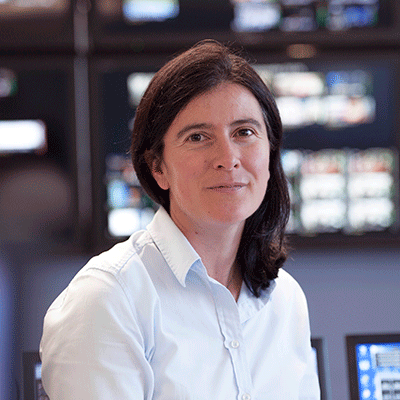Maximize Your Content With Linear TV Streaming
Media

Today’s landscape for viewers seeking their next piece of content can be summed up in one word: options. Shows about eccentric art pieces from Africa, the latest cricket match, specific genres of anime, or restoring Gothic Victorian furniture are all just a few clicks away. Whether on mobile, laptop, or the family room TV, the labyrinth of content choices can seem endless (and daunting), with each vying for viewer attention.
Despite so many options, the growth of linear TV streaming demonstrates that audiences still long for a curated and passive experience. For example, the revenue associated with Free Ad-Supported TV (FAST) channels—a subset of linear TV—is poised to triple by 2027.
Why? It depends on who you ask.
For consumers, scrolling through vast libraries can induce decision fatigue, which makes the simplicity of scheduled programming seem refreshing. The curated content of a thematic channel makes for a more relaxing experience, as opposed to seemingly endless browsing for programming that fits their current mood.
For media companies, expanding their brands to new audiences and opening up new revenue opportunities can be difficult with a single platform and media catalog. On the other hand, presenting content across multiple channels, whether single IP (genre-specific) or branded mainstream programming, can more efficiently reach audiences across the globe.
Advertisers are also very much aware of the opportunity offered by linear TV streaming. Unlike VOD services, which depend on active viewer engagement with individual content assets, linear streaming services deliver content (and ads) until the viewer leaves the channel. In other words, they can reap the same benefits of the traditional broadcast and cable linear model with the advantages of targeted advertising available on digital streaming.
Challenges for Linear TV Streaming
Building a linear TV service requires expertise in a few key areas that will ensure efficiency and deliver viewer satisfaction.
- Global reach. Reaching audiences across the globe depends on multi-CDN delivery and content localization, including support for multiple language tracks, subtitles and captions, and options for automated transcription and translation services. Engaging those audiences will vary but should include immersive playback experience on the web, mobile, or CTV platforms, and potentially interactive options like chat and quizzes.
- Flexible integrations. Since you’ll likely have a variety of content sources and delivery mechanisms, seamless and adaptable integrations will be key for technical success. This may include app framework providers for OTT, ad servers, payment processing, subscriber management, and social media platforms.
- Optimized workflows. Success in new markets is also dependent on streamlining your operational resources and shortening your time-to-market. But managing a high volume of content through multiple systems will ultimately be cumbersome and inefficient. A single, unified system for all video content can transform your fragmented processes into a smoothly orchestrated, end-to-end streaming engine.
- Data visibility. Streaming services provide valuable data on audience behavior, content performance, and the streaming experience. But all of that data must be aggregated and harmonized across distribution strategies and services to have value. This could be presented via in-platform reports and dashboards, but it should also be accessible through easily integrated APIs.
- Revenue visibility. Not only will you need your revenue data integrated across distribution strategies, you’ll need to show results aligned with executive revenue targets. This is where a technology partner isn’t enough; you’ll need a partner with industry expertise. Working closely with media veterans who have built and launched some of the most successful streaming services is essential to competing in burgeoning markets.
Solutions for Linear TV Streaming
To overcome the challenges of building a linear TV channel, it’s essential that your video platform allows for the appropriate metadata.
When it comes to linear TV, metadata isn’t just a nice-to-have to aid organization, discovery, and descriptions. Rather, it’s the linchpin that helps both optimize the viewing experience and extend your reach to other platforms and streaming destinations.
For starters, by leveraging the information that metadata offers, users can more easily find the content suited to their taste by simply entering a few keywords.
Metadata also plays a crucial role in curating intelligent playlists. Suggestions can now be more personalized and intuitive, creating a smarter playlist based on the movies, episodes, series, and seasons viewers have been watching.
Another key benefit of metadata for your linear TV service is deeper analytics and insights. Beyond top-performing content or time spent watching, you’ll be able to break down data by multiple dimensions. Series, seasons, genres, and ratings are just a few of the filters you can use to get more granular intelligence on your content and your audience.
Additional reach through syndication rounds out the use cases for linear TV streaming. In fact, Pay TV operators, OTT services, smart device manufacturers, and other providers require detailed video metadata exchanges to ensure seamless integration and discoverability.
Furthermore, syndication requires a TV schedule in conjunction with descriptive video data (and imagery) in order to power on-screen guides and discovery. This ensures that audiences can always find and enjoy their favorite TV shows, movies, and sports programs.
New Brightcove Solutions
For these reasons, Brightcove has extended the metadata associated with the video assets in our platform to include metadata from the Gracenote schema. Gracenote, a Nielsen Holdings company, licenses a database of editorial and contextual data and imagery that has been widely adopted by streaming services providers.
Thanks to this extension, Brightcove users can classify a video asset as a movie or an episode. They can also specify its Display Title, Description, and Release Date, as well as its Genre, Rating, Production Country, and Keywords with Controlled Vocabulary. And most importantly, users can note its TMS ID, which is specifically used by distribution platforms that license Gracenote data to power content distribution and discovery.
When an asset is classified as an episode, you can also create a hierarchy and associate it with a series and season. This content hierarchy means a season can inherit missing metadata from its season, and an episode can inherit metadata from its season or its series.
To enhance our UX experience, we have introduced typeahead user-assisted entry to relate a video instance to a series or season. And, if a series or season is not present in your database, you can simply create one in the video details, avoiding unnecessary navigation.
In addition to extended metadata, we have also introduced a scheduler that enables the creation of a 24/7 channel and an Electronic Program Guide (EPG). This allows delivery to a variety of streaming destinations including your owned-and-operated websites and apps or partner destinations where you want your channels to appear.
Thanks to our scheduler, you can manage the programming slots of your week and the necessary ad pods, including pre/post jumper selection. You can quickly add videos, playlists, and series; resolve conflicts by moving, deleting, and swapping content; and configure slates for fallback during program gaps. Once you have defined the destinations that will receive your channel, you can review and publish it to your apps.
Opportunities for Linear TV Streaming
For media companies with rich VOD libraries, linear TV streaming presents an opportunity to get more value out of those assets and reach a wider audience.
Whether your audience wants to focus on a specific piece of content or enjoy the programming on a 24/7 channel, it’s important to cater to their different needs. The right video platform will offer the flexibility needed to manage different experiences while offering the appropriate monetization models to best suit your content and audience.
You may even decide to try some solutions for a given timescale to observe your audience behavior and make content decisions, like novelty pop-up channels. You could showcase films from a film festival, play holiday content throughout the season, broadcast past sports events, or even supplement a trade show.
Linear TV in a Streaming Media Landscape
Maximizing content across multiple platforms can be a logistical nightmare. Each platform may have different requirements, workflows, and analytics tools, making it challenging to optimize your streaming operations. By consolidating your on-demand and linear content on a single platform, you can simplify your content management process and increase efficiency.
However, that single platform must have the detailed metadata Pay TV operators, OTT services, smart device manufacturers, and other providers require. And that platform must have the ability to create EPGs through a scheduler so your content can be delivered by those distributors. Media companies know this, and Brightcove Media Studio can not only deliver on those demands, it can bring the incredible value Brightcove is known for.
For example, you could enhance your content with Ad Monetization, our fully managed ad-ops service, or add FAST distribution through our partner, Frequency. Solutions like Ad Insights and Subscriber Insights can also provide a more comprehensive picture of the viewer engagement and preferences that lead to audience loyalty and content monetization.
The streaming media ecosystem presents both challenges and unprecedented opportunities. While the sheer volume and variety of content will only continue to grow, the potential to nurture a variety of audiences through strategic partnerships and robust media platforms has never been greater.



